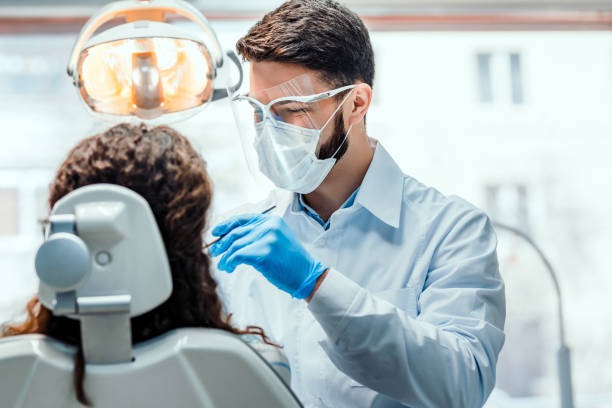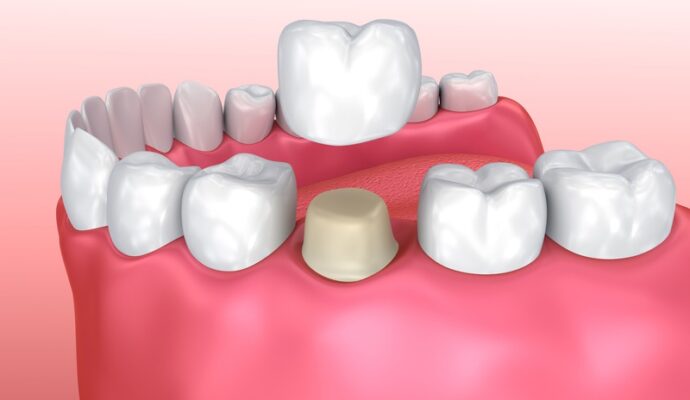When faced with a dental emergency, most people focus on immediate relief from pain or discomfort. Whether it’s a sudden toothache, a broken tooth, or another urgent issue, knowing what to do after such procedures can make all the difference in your recovery.
1. Stay Calm and Follow the Instructions
The first thing to keep in mind is to remain calm. After your emergency treatment, your dentist will likely provide specific instructions to help guide your recovery. Here are a few general tips:
-
Please pay attention to any prescriptions and make sure you understand how to take them.
-
Ask questions if there’s anything unclear about your aftercare plan.
-
Ensure you have your dentist’s contact information for any follow-up concerns.
2. Managing Pain and Discomfort
Pain management is crucial for recovering from emergency dental procedures. Over-the-counter pain relievers can be useful, but make sure to follow your dentist’s advice. Sometimes, they may prescribe specific medications that are more effective for dental pain.
Choosing the Right Pain Relief
-
Over-the-counter options: Ibuprofen and acetaminophen are popular choices.
-
Prescription medication: In some cases, your dentist might prescribe something stronger.
-
Natural remedies: Ice packs applied to the outside of your mouth can reduce swelling and discomfort.
3. Rest and Recovery
Giving your body the time it needs to heal is essential. Try to avoid any strenuous activity for the first couple of days after your procedure.
Sleep with Your Head Elevated
Keeping your head elevated can reduce swelling. You might find that extra pillows at bedtime help to keep you comfortable.
4. Eating and Drinking Wisely
What you eat and drink after a dental procedure matters a lot. Following these guidelines can promote faster healing:
-
Avoid hard, crunchy foods that could aggravate your dental issue.
-
Stick to soft, nutritious foods like mashed potatoes, yogurt, and smoothies.
-
Stay hydrated, but avoid beverages that are too hot or too cold.
Avoiding Irritants
Try to steer clear of anything that could irritate your mouth, such as spicy foods or carbonated drinks.
5. Maintaining Oral Hygiene
While it might seem counterintuitive to brush near a sensitive area, keeping your mouth clean is crucial.
Proper Brushing and Flossing Techniques
-
Use a soft-bristled toothbrush.
-
Be gentle around the affected area.
-
Consider using an antiseptic mouthwash to keep bacteria at bay.
6. Keeping an Eye on Symptoms
Monitoring your recovery process is key. If you notice any unusual symptoms, such as prolonged pain, swelling, or bleeding, it’s important to contact your dentist.
Recognizing Warning Signs
Look out for:
-
Fever: Could indicate an infection.
-
Severe pain: This might suggest a complication.
-
Swelling that doesn’t subside: Needs professional attention.
7. Follow-Up Appointments
Your recovery doesn’t end when you leave the dentist’s chair. Scheduling a follow-up appointment ensures everything is healing as it should.
Why Follow-Ups Matter
-
Confirmation of healing: Ensures that the procedure was successful.
-
Addressing concerns: Gives you a chance to raise any questions.
-
Discussing future care: Helps in planning ongoing dental health support.
8. How To Plan Future Visits
Though thinking about future dental visits might be daunting, they’re an essential step in maintaining your oral health. If you’ve experienced a dental emergency in New York, you’ll know how crucial it is to have a reliable dentist and plan for any emergencies.
9. Relaxation Techniques
Stress can hinder recovery. Engaging in relaxation exercises may help your body heal:
-
Try deep breathing or meditation techniques.
-
Consider gentle yoga to promote circulation.
-
Listen to calming music or read a favorite book.
10. When to Seek Professional Dental Care
Knowing when to see a dentist in an emergency can greatly impact your dental health. Sometimes, it’s better to be safe and see a dentist in New York City if you’re unsure whether your symptoms require professional attention.
Indicators for Seeking Immediate Care
-
Severe pain that doesn’t subside with medication
-
Swelling or signs of infection
-
Broken or displaced teeth
11. Considering Future Treatments
After recovering from an emergency procedure, consider long-term solutions such as dental implants. Discussing options with this dental implant dentist can clarify how to proceed with more permanent solutions.
Making the Right Choice
-
Consider the longevity of various procedures.
-
Evaluate the cost vs. benefit of different treatments.
-
Seek advice from trusted dental professionals.
12. Using Technology to Aid Recovery
In today’s digital age, technology can play a significant role in your dental recovery process.
Leveraging Apps and Online Resources
-
Health Monitoring Apps: Use apps to help you track your symptoms, medication schedules, and overall recovery process.
-
Educational Videos: Watch videos that provide tips on maintaining dental hygiene and effective recovery strategies.
-
Communication Tools: Stay connected with your dentist through online portals for easy access to advice and appointment scheduling.
-
Telehealth Services: Consider virtual consultations for any immediate questions or follow-up care without having to visit in person.
By integrating these technological tools, you can enhance your recovery experience and ensure a smooth path back to optimal oral health.
Wrapping Things Up
Recovering from an emergency dental procedure requires patience and attentiveness. By following the tips and advice shared here, you can navigate your recovery journey with confidence, ensuring the best possible outcome for your dental health. Remember, knowing what to do before and after a dental emergency can provide peace of mind and lead to faster healing. Being prepared and knowledgeable can go a long way in making your recovery smooth and efficient. So relax, follow these guidelines, and take care of your smile!




